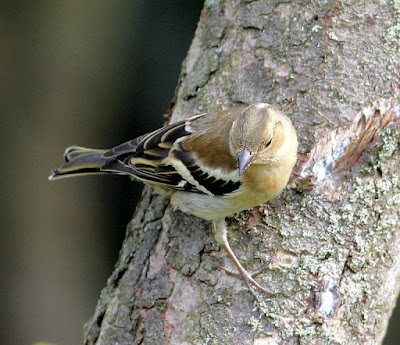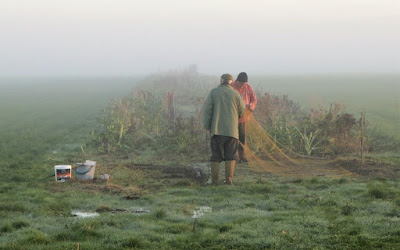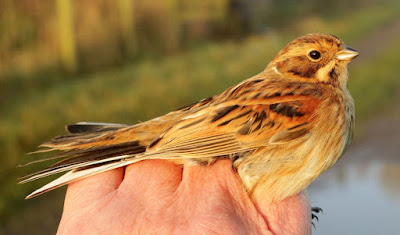Following my 0525 alarm clock and the inland drive Saturday dawned bright if a little cold at 2.5°C. No problem because the sun would soon rise to bathe us bird ringers in the morning sun of Oakenclough where I met up with Andy and Will.
Until this point England had seen its wettest March in more than 40 years. Met Office data up to 30 March showed 111.3mm of rain fell during the month, 91% more than the average. So far April has been little better but fairly normal, less rain but quite cold, therefore not helpful to the arrival of large numbers of migrant birds from southern climes.
And whisper it quietly so as not to be “cancelled” but the Northern hemisphere may be entering a temperature cooling phase until the 2050s with a decline up to 0.3°C. Arctic summer sea ice stopped declining about a decade ago and has shown recent growth. The Greenland surface ice sheet grew by almost 500 billion tonnes in the year to August 2022, and this was nearly equivalent to its estimated annual loss.
Of course, climate alarmists have not caught up with these recent trends because there’s more money to be made by frightening Joe Public that the world is about to end unless they subscribe to such patent nonsense.
Back to the job in hand and Saturday’s ringing. The morning was slow with 11 birds caught. Although migrant warblers were in evidence in the shape and sounds of 3 Willow Warblers, 2 Chiffchaffs and a single Blackcap we caught none of those, instead 7 Lesser Redpoll, 2 Robin, 1 Goldfinch and 1 Long-tailed Tit.
Three male Willow Warblers stuck to their chosen song posts all morning without venturing the very few yards to our mist nets. It was as if they were reluctant to vacate the perfect spot for even a minute or two to let an interloper grab the prime location together with a passing female.
Lesser Redpolls were much in evidence with at least 20 seen and heard in small parties throughout our 4 hours stay. Unusually all of the ones caught were females. Perhaps many males have already travelled further north in their search for territory?
With eyes peeled for birds on the move a single south bound Swallow was potentially going in the wrong direction unless it changed its mind upon hitting the cold that we too felt.
Otherwise, three Buzzards, but not together, a single Pied Wagtail and a passing Mistle Thrush completed a good Saturday morning.
Buzzard
Back soon with more news, views and pictures from Another Bird Blog.
Linking today to Eileen's Saturday Blog and Anni in Texas.
































































.jpg)











